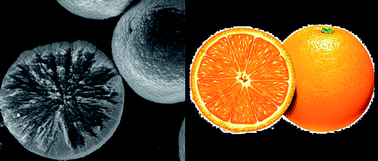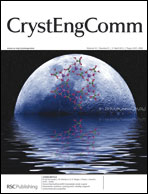Controlled synthesis of orange-like LnBO3:Eu3+ (Ln = Y, Tb) mesocrystals via a facile organic additive-free hydrothermal route
Abstract
Orange-like LnBO3:Eu3+ (Ln = Y, Tb) mesocrystals were first synthesized by a facile one-pot hydrothermal route. Without any organic additives, nanoparticles were assembled together side-by-side and end-to-end and built into well-defined microspheres in a radical mode. The formation mechanism of orange-like mesocrystals was proposed on the basis of detailed investigation on the samples at different reaction stages and new growth models for mesocrystals were observed. The results showed that even in such a simple hydrothermal reaction system, the formation of LnBO3:Eu3+ mesocrystals went through complex crystallization and transformation processes, which include random aggregation of the amorphous nanoparticles into microspheres, crystallization and rearrangement of nanoparticles, mesoscale transformation to mesocrystals based on oriented attachment, and the simultaneous cavitating process of solid microspheres through Ostwald ripening. It was also found that orange-like mesocrystals could be further transformed into single crystals after a longer hydrothermal aging process. The present study adds new useful information for the understanding of the principles of complex crystalline superstructure growth.


 Please wait while we load your content...
Please wait while we load your content...